SAILING UPWIND IN WAVES
Basic Principles
Many styles of wave sailing can be seen at international events. Different wave conditions pose different problems, but two basic principles always apply:
- It is vital that speed is maintained and as little of the boat’s dynamic energy as possible is lost negotiating each wave
- Energy loss occurs when the boat and helm are slowed by pitching, by sailing uphill and by wave impact on the bow or helm
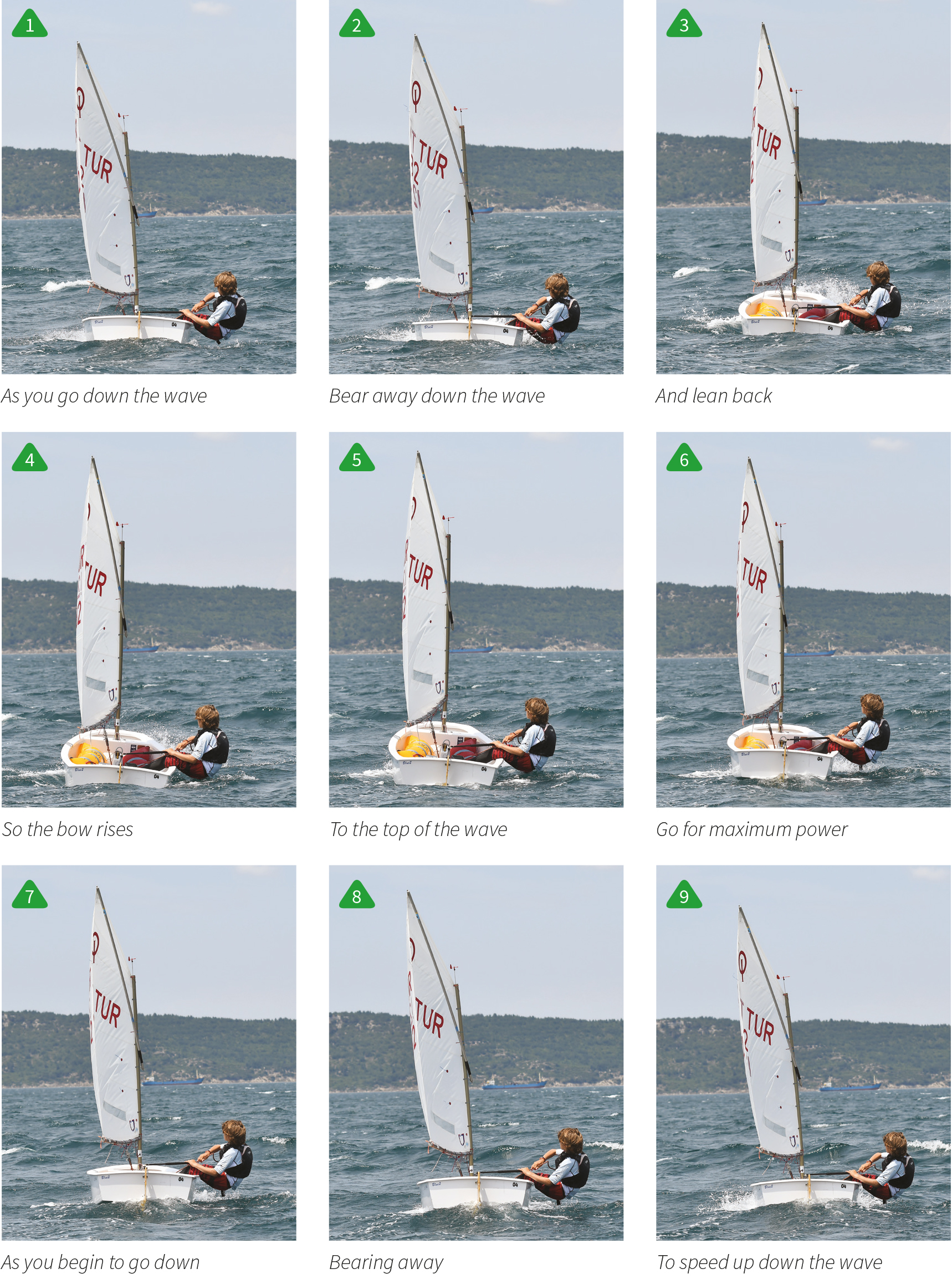
Pitching
When a boat goes through waves, the ends of the boat move up and down. This is called pitching and this movement absorbs driving energy and slows the boat down. The more easily the ends can lift, the less energy will be lost. This can be achieved by:
- Keeping the ends of the boat as light as possible. Food, drink, sponges, painters and paddles should all be stowed by the daggerboard box.
- Sitting at the point where the boat pivots, so the boat moves without moving your body. Only the boat pitches – you maintain your equilibrium and less energy is lost. Allow your body to move with the motion of the boat, keep your core muscles relaxed and flexible. On larger waves you can help the bow rise by more forcefully rocking your shoulders back then returning to your equilibrium position.
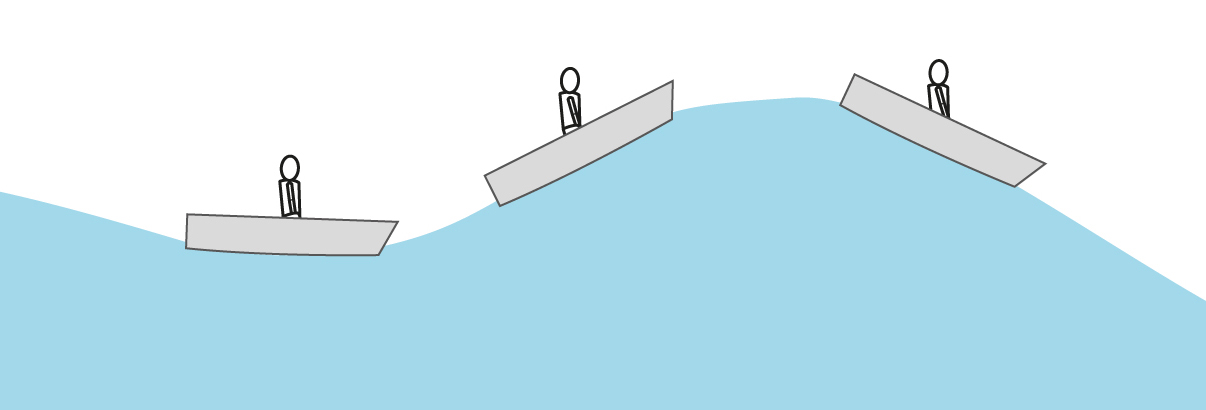
To reduce the energy lost, allow the boat to pitch
Apart from the loss of energy and speed when pitching due to the hull moving up and down there is another effect. The rig will also rock backwards and forwards. The apparent wind moves forward as the rig rocks forward down a wave and, as the bow rises and the rig rocks back, the apparent wind moves backwards. This means that the sail is never set at the optimum angle causing loss of power and speed.
This isn’t too much of a problem once you are overpowered because you can adjust to this with steering and playing the main. However, in lighter winds and big waves or chop, it can mean that, when trying to stop the boat pitching, it is better to keep the power in the sail and accept the loss from hitting the waves.
In these conditions you move your body the opposite way and, as the wave tries to lift the bow, you rock forward to try to push it down to keep the sail more stationary.
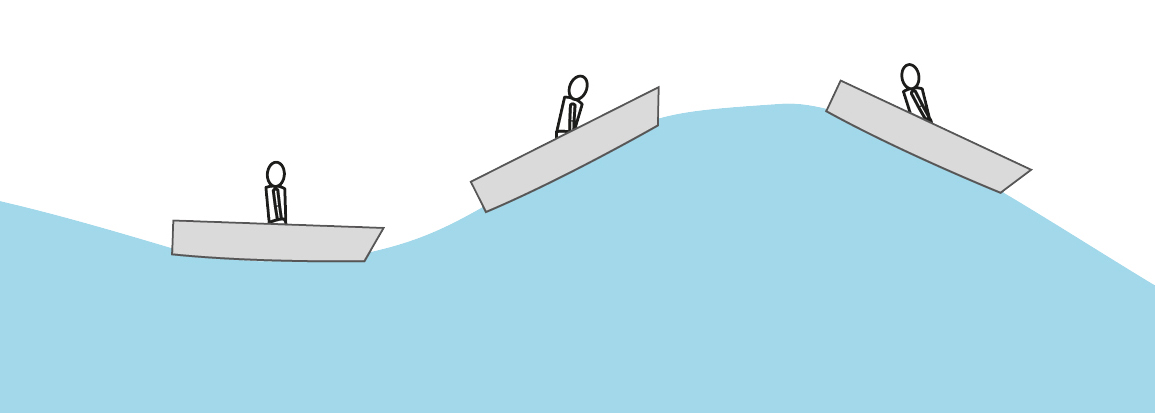
If you are trying to reduce pitching and the effect on the rig, move in the opposite way to the boat
Uphill
Energy and speed are lost when the boat has to rise to go over a wave. In chop this isn’t as much of a problem – pitching is more important. However, in larger waves, going up the face of the wave can slow you dramatically and cause lots of leeway.
You can steer to minimise the time going up the wave: head up as the wave lifts your bow then, on the top of the wave, bear away and power up. This is called power beating. As you get to the top of the wave and pull the power on, hike the boat level as forcefully as you can. Then move in for the short lull in the trough and as you head up the face of the next wave.

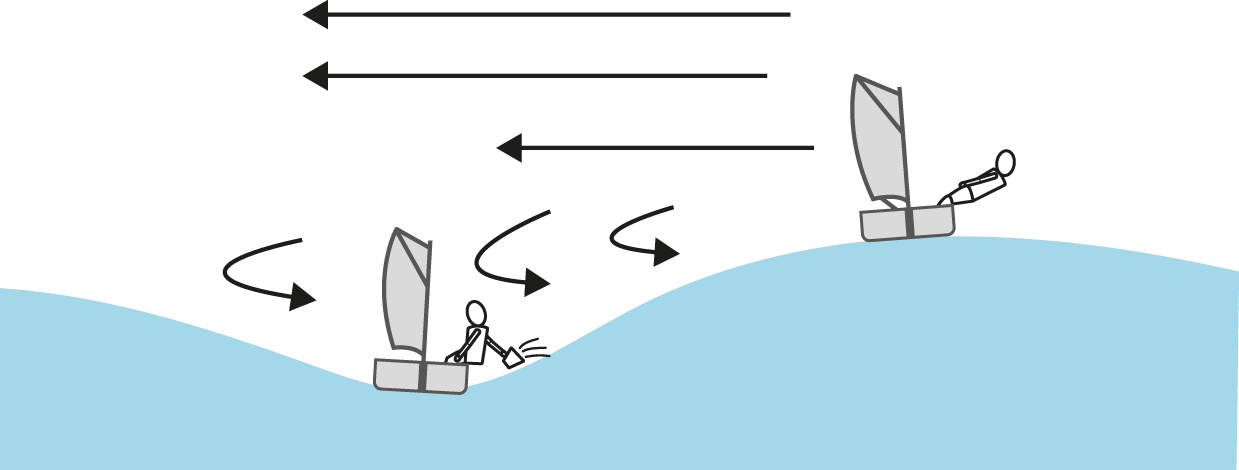
The natural lull in the trough can also be used to heel to weather and scoop out a bailer of water
Wave Impact
The impact of waves on the bow will kill boatspeed. The weather bow is particularly important because impact here results in water coming aboard.
- Sit back to lift the bow: sailors 45kg or more sit 20cm behind the bulkhead; smaller sailors sit up to 60cm back in heavy weather
- Heel the boat 5 degrees to lift the weather bow
- Balance the boat by lifting the daggerboard
- Sail fast and free
- Allow the boat to pitch easily
Wave impact on the helm can seriously stop the boat. It is important in waves to hike with your thighs parallel to the boat so your body doesn’t get close to the water and you can see the waves.
Wave conditions vary massively in size, shape and angle. When sailing in waves, the key is to work out which effect is the most detrimental to boatspeed and then deploy the best technique of set-up, steering, body movement and position to counter this. And remember waves are great fun!!
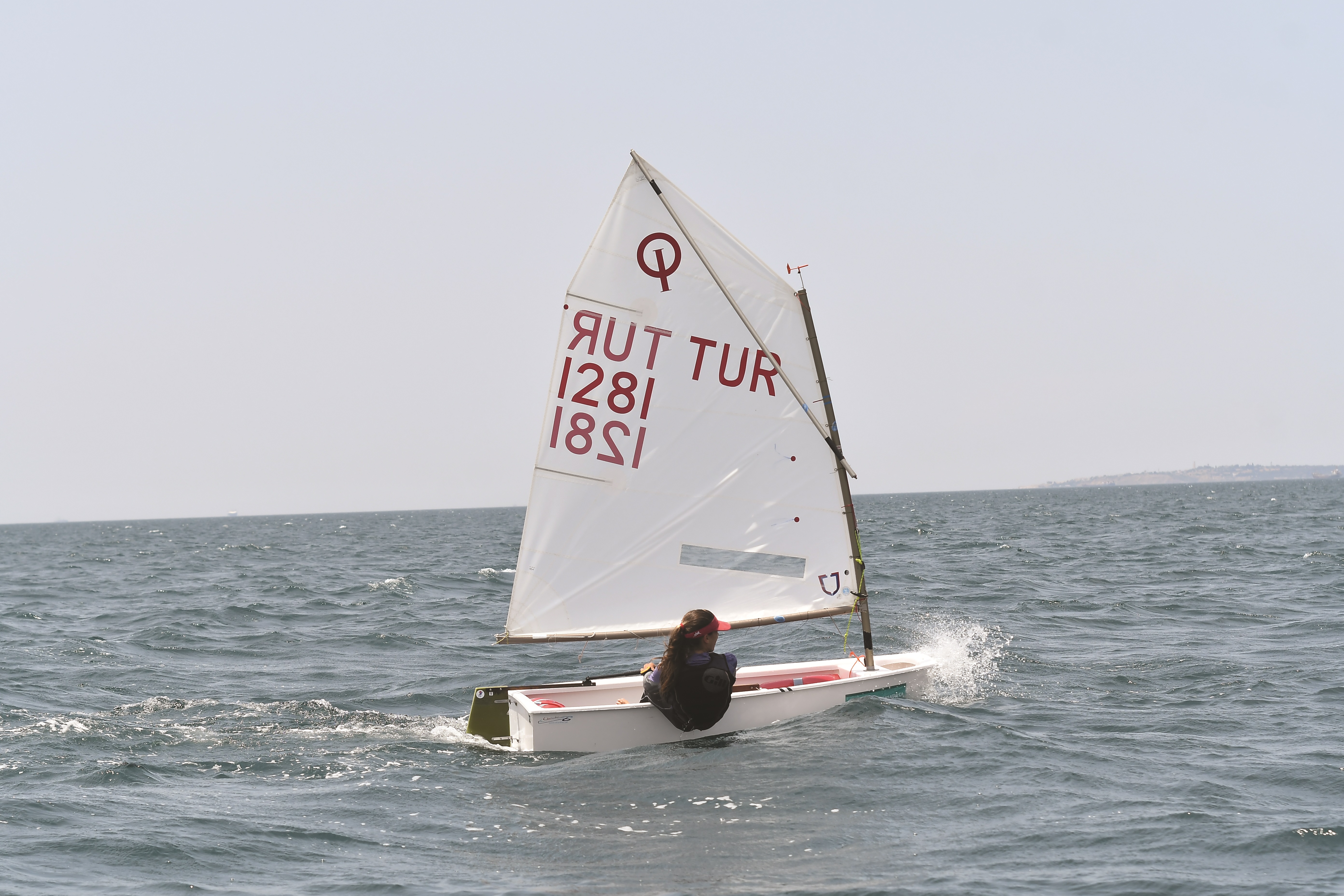
Beware of burying the bow in chop – lean back to lift the bow over each wave
Bad Habits
Take a look at top competitors at an international event sailing to windward. Most will be storming along, hiking hard and appearing to be going fast. Take a closer look. While some are sailing with a smooth continuous motion, others sail fast then pause, slowing before getting back to full speed, then slow again.
Take a look at your own sailing. Do you sail smoothly and at maximum speed, or are you a pauser? It’s easy to pick up bad habits which are hard to recognise and change.
- Do you luff too much in the gusts? Is this due to letting your boat heel too much? Should you be playing the mainsheet to keep her level?
- Are you fit enough to drive fast and hard for a whole beat? Are your hiking pants comfortable?
- Are your feet supported firmly by the toestraps in the right places? Do you wriggle from one leg to the other, and what happens to the boat when you do this?
- Do you really keep the boat level or is it heeled to leeward? It’s easy to get used to an angle of heel which is comfortable, but it may make the boat unbalanced. How about trying an inclinometer on your mast thwart to help change your style?
- Are you hitting waves with the bow or with your body?
When you are training or racing, try to sail the boat at 100% focus and as well as you can. Avoid picking up bad habits.
Optimist Racing is written by top coaches Phil Slater and Steve Irish, who have coached from a regional level to Britain’s sailing stars, including Ben Ainslie and Hannah Mills (who writes the foreword to the book).
To learn more from top coaches Steve Irish and Phil Slater, Optimist Racing can be bought here
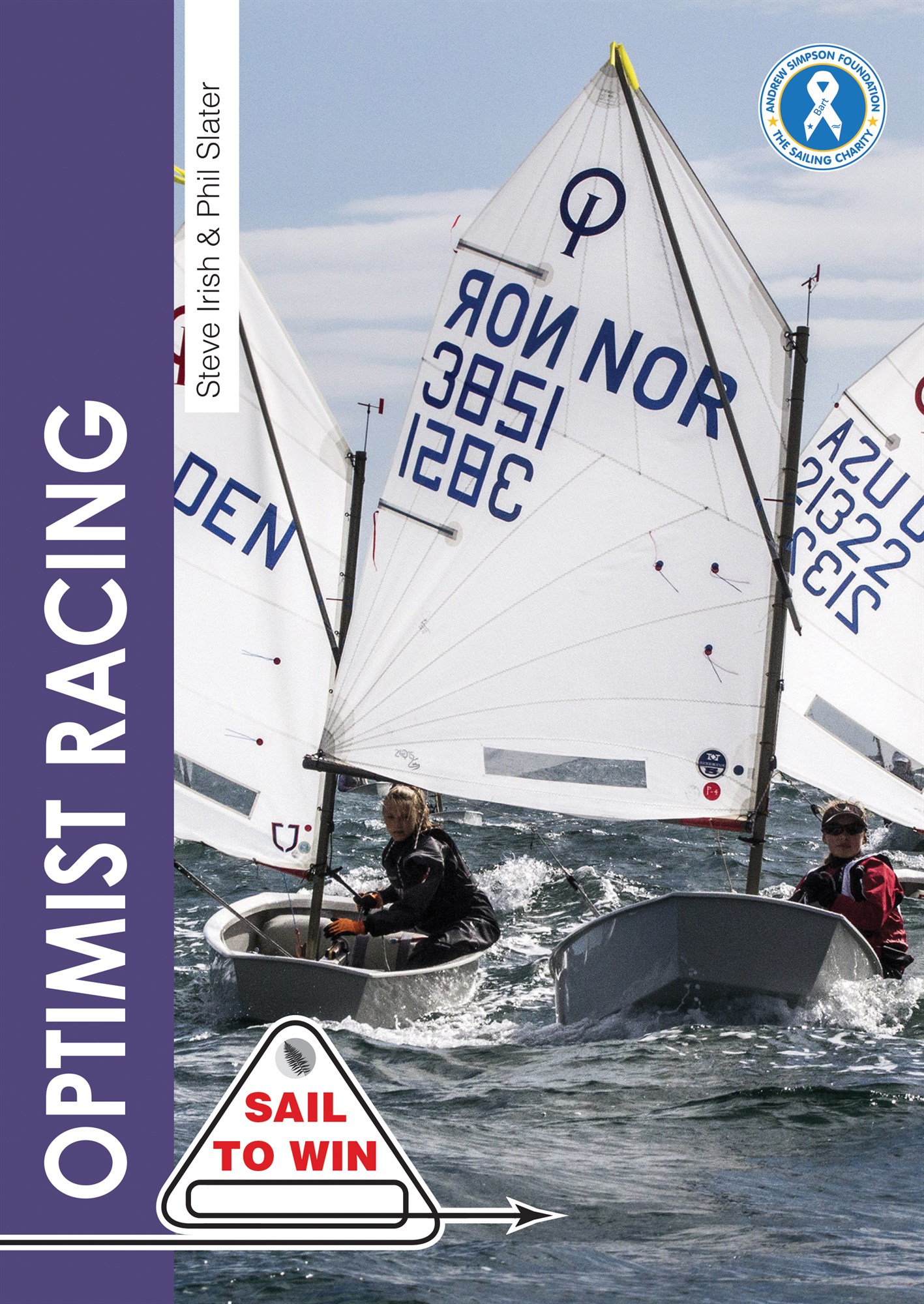
© Not to be reproduced without written permission from Fernhurst Books Limited.